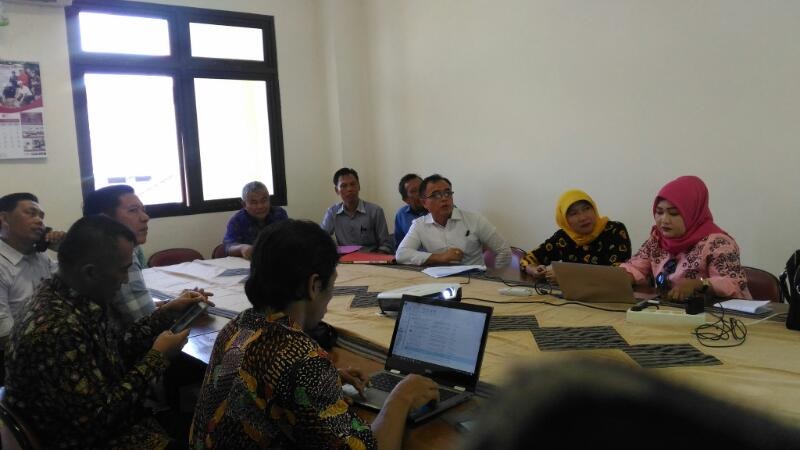
Another landsliding occured in Ponorogo, East Java, on Sunday (9/4). But there is even greater risk for flash flood after landslides.
“Usually, when landslides happen repeatedly, there will be flooding that follows and the casualties will multiply. So, we want to avoid this type of flash flood, because this thing can be avoided,” said Rector of UGM, Prof. Ir. Dwikorita Karnawati, M.Sc., Ph.D., in a press conference on Tuesday (11/4) at UGM Main Office. The Rector was accompanied by disaster mitigation team that consists of Dr. Danang Sri Hadmoko, Dr. Hatma Suryatmojo, Dr. Ngadisih, and Bagus Bestari Kamarullah.
Flash floods that follow after a landslide, in her opinion, is a very dangerous disaster as it carries landslide sediment in the form of rocks and trees that can destroy settlements. She identified early symptoms of flash flood, such as increased river surface and murkier water that carries sands and pebbles.
In the past week, the Rector led the mitigation team to Banaran, Pulung, Ponorogo in East Java to the disaster site that had taken the lives of 28 people, to get facts on the site and learn the cause of the landslide. The team analysed and mitigated possible disasters around the area and did mappings using drones of relocation sites for impacted people.
Dwikorita explained after observation that the characteristics of slopes in the area that cuts across did show vulnerabilities to landslides. She cited the rains were one of the triggers causing the landslide. She emphasised, however, that landlside does not instantly happen after the rain, because it takes time for the rainwater to get absorped in the soil. She reminded people living in the risk zones to minimise the risks by not returning to their place immediately after the rain. Seeing this phenomenon, she emphasised on alertness against sloping areas that are disaster risky.
“Anyone ought not to stay at a location that just experienced a landslide, except experts that are already well-equipped. What you need to do is increase alertness. It’s time to yield to nature, for the time being just leave the risky areas,” said Dwikorita.
Similar views were shared by Bagus Bestari Kamarullah. He said ignorance of risks after a landslide often took greater casualties.
“Aftermath disasters have the risk to take more lives than the previous one, because in the first event, people wanted to help and find their loved ones without knowing the greater risks,” he said.
As such, he emphasised the need for understanding on disaster risks from related stakeholders, the people, volunteers or officials that are involved for evacuation efforts.


